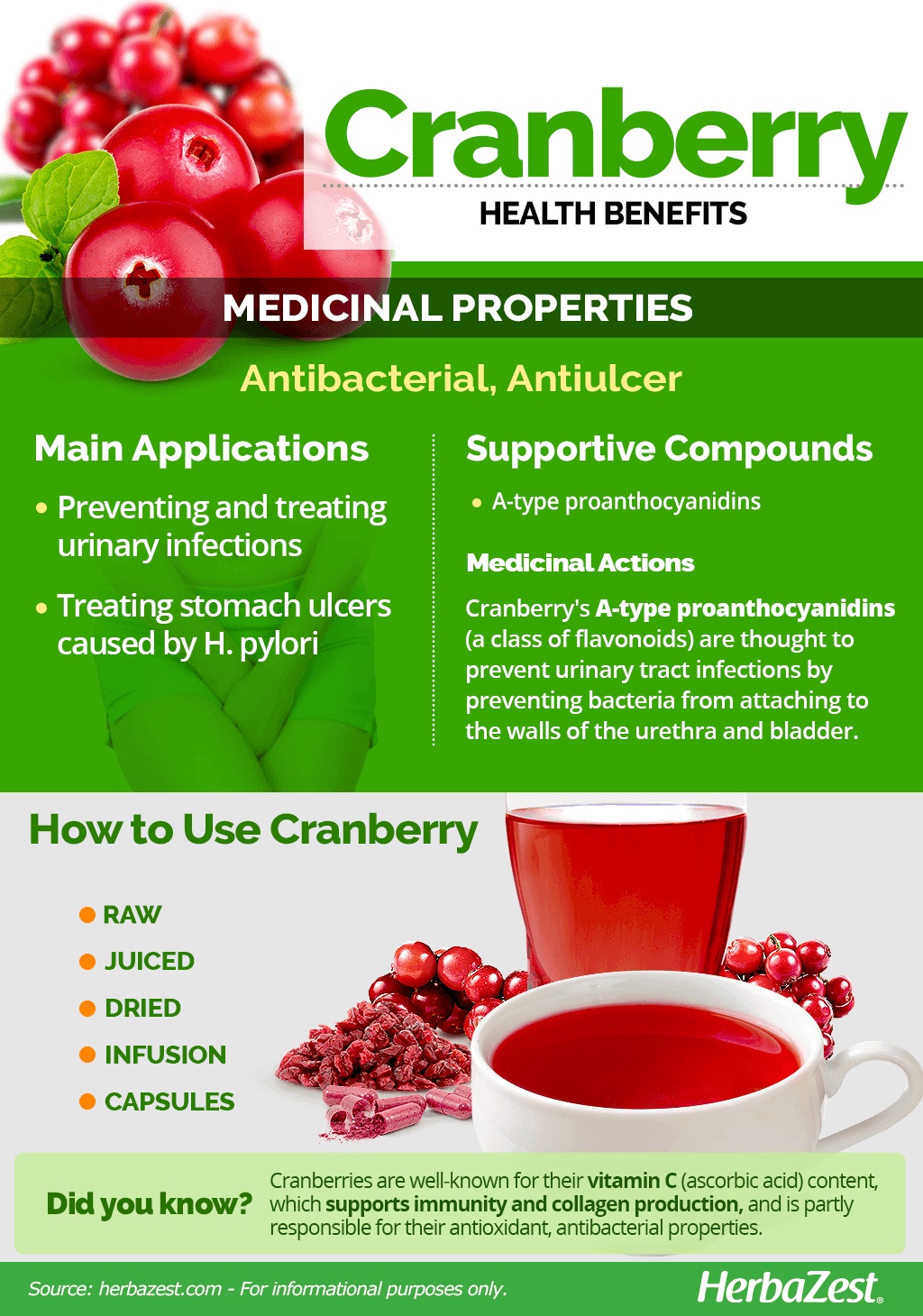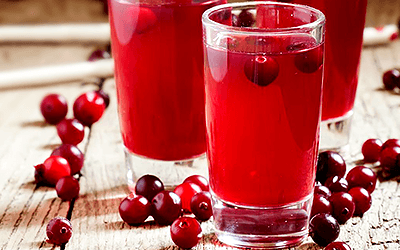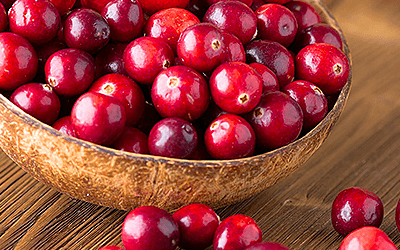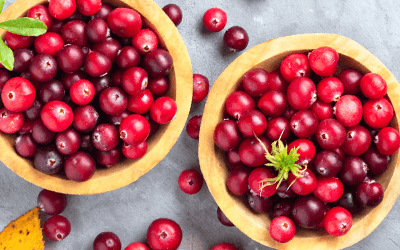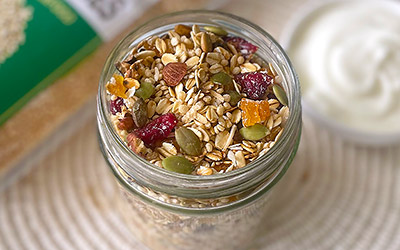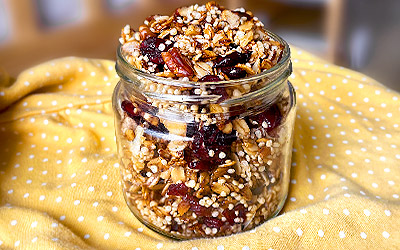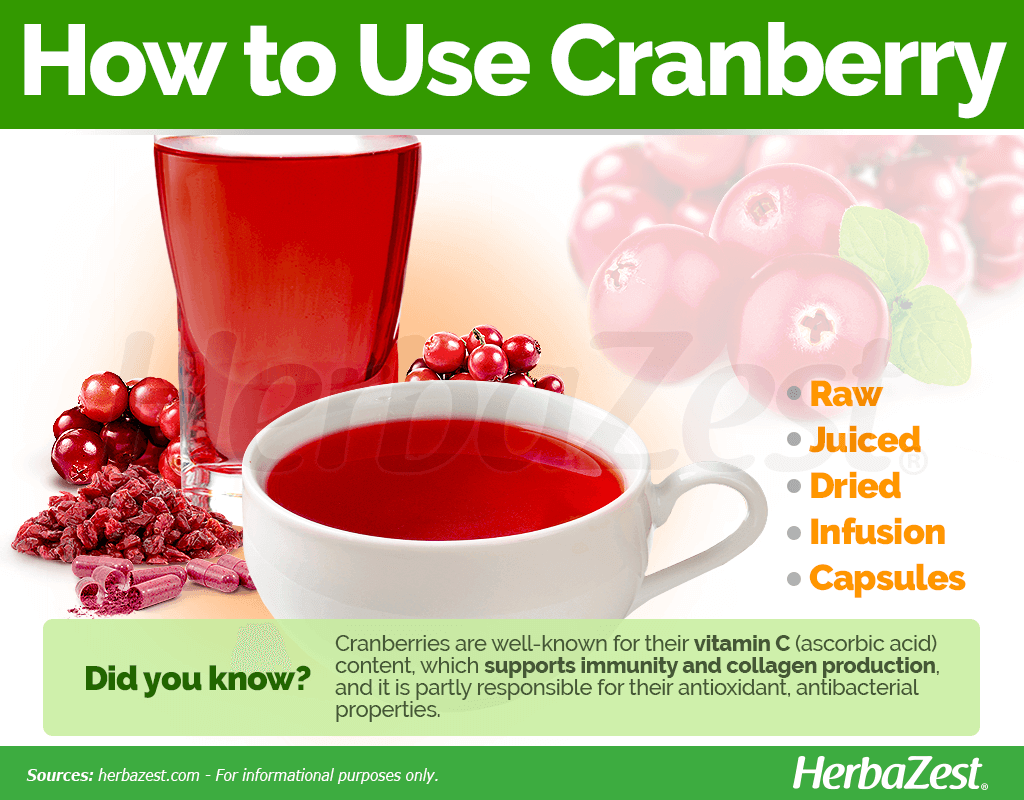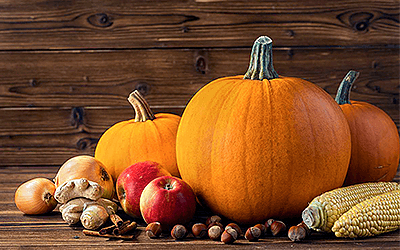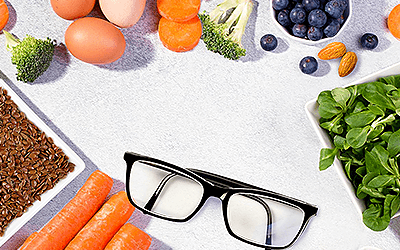Hailing from North America, the cranberry plant was used by indigenous peoples as both medicine and food. Commercial farming of cranberries began in the early 1800s, and much of the product was shipped to Europe, where it garnered popularity that still remains as an herbal medicine and holiday treat.
Cranberry Medicinal Properties
- Medicinal action Antibacterial, Antiulcer
- Key constituents Proanthocyanidins, vitamin C
- Medicinal rating (3) Reasonably useful plant
- Safety ranking Safe
Health Benefits of Cranberry
Canberry is well-known for its antibacterial effects. Its more supported medicinal uses - both in tradition and modern day - are:
Preventing urinary tract infection. Cranberry has been traditionally consumed to combat the microorganisms that cause genitourinary infections.
Treating stomach ulcers. Because of its antibacterial properties, cranberry has shown to be helpful as a part of the treatment of the sores caused by the presence of Helicobacter pylori.
Because of their ability to inhibit oral bacteria, cranberries are also thought to be helpful in preventing the formation of dental plaque.
Additionally, preliminary research has hinted at new cranberry's properties, including raising "good" cholesterol levels and stopping certain viruses.
How It Works
Cranberry's A-type proanthocyanidins (a class of flavonoids) are thought to prevent urinary tract infections by preventing bacteria from attaching to the walls of the urethra and bladder.1,2 Although it is not yet definitive, this same mechanism could also explain why cranberry products seem to inhibit Helicobacter pylori as well as certain oral bacteria.3
Cleavers and parsley are also great for treating and preventing urinary tract infections, whereas cabbage and goldenseal have similar anti-ulcer properties.
Cranberry Side Effects
Cranberry has very few known side effects. However, overconsumption can cause digestive upset and diarrhea.
Cranberry Cautions
Interactions between cranberry and warfarin have been reported. Consuming cranberry juice while taking this anti-clotting medication may lead to bleeding or excessively thin blood.
Those taking prescription drugs that affect the liver should consult a physician before consuming cranberry in medicinal amounts.
Cranberry Nutrition
The most abundant nutrients in cranberries are vitamin C (ascorbic acid), crucial for the functioning of the immune system as well as for collagen production, and manganese, an essential mineral for carbohydrate metabolism, calcium absorption, and regulation of blood sugar levels.
Other nutrients, present in adequate amounts in cranberries, are vitamin E (alpha-tocopherol), necessary for cellular functions and proper blood flow, vitamin B5 (pantothenic acid), which plays a key role in the synthesis of proteins and fats, and copper, a trace mineral that is crucial for the production of new red blood cells and bones health, as well as for vascular, nervous, and immune functions.
Cranberry's nutritional value is completed a by good amount of dietary fiber, necessary for gastrointestinal functions and proper metabolism of sugars, along with small quantities of important nutrients, such as vitamins K (phylloquinone), B6 (pyridoxine), and B2 (riboflavina) as well as potassium.
100 grams of cranberry fruits provide 46 calories and 14% of the daily value for dietary fiber.
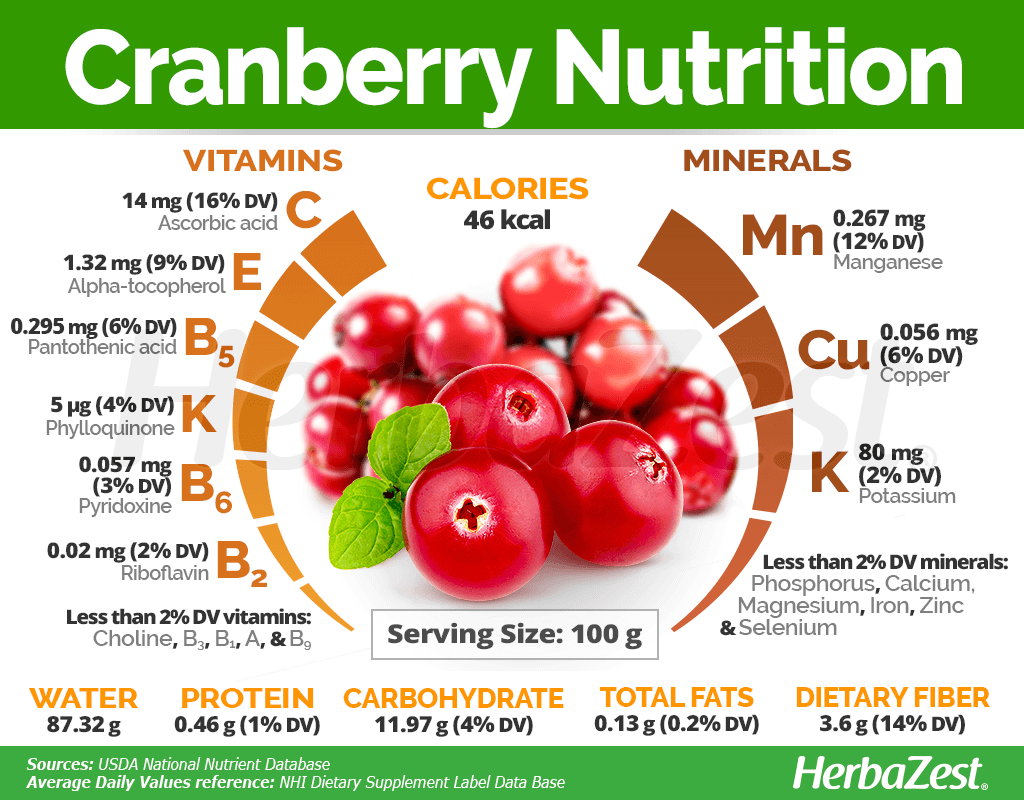
How to Consume Cranberry
While the antioxidant benefits of cranberry are usually obtained by consuming it as food, the best way to take full advantage of its antibacterial benefits is by taking it in supplemental forms and herbal preparations, which have a higher concentration of active ingredients.
Natural Forms
Raw. Fresh cranberries are considered an acquired taste because of their tart flavor and are more commonly consumed in tarts, scones, sauces, and jams.
- Dried. Dried cranberries are a popular snack and can also be added to baked goods, like cakes, muffins, and cookies.
Juiced. Adults looking to prevent and ease UTIs often drink cranberry juice on a daily basis.
Infusion. Dried cranberry can also be brewed and taken an infusion to prevent and relieve urinary tract infections.
Cranberry is a staple on Canadian, American, and British holiday tables.
Herbal Remedies & Supplements
Capsules. Cranberry is highly popular in this supplemental form. Dosages usually depend on the ailment that requires treatment.
Growing
- Life cycle Perennial
- Harvested parts Fruit
- Light requirements Full sun
- Soil Clay loam, Peaty, Well-drained
- Soil pH 3.5 – 4.4 (Extremely acidic), 5.1 – 5.5 (Strongly acidic)
- Growing habitat Cool temperate regions, Temperate climates
- USDA Plant Hardiness Zones 4a, 4b
- Planting time Spring
- Plant spacing average 3 m (9.84 ft)
- Growing time April to November
- Propagation techniques Cuttings
- Potential insect pests Leafhoppers, Caterpillars, Flea beetles, Root weevils
- Potential diseases Fungi, Phytophthora spp., Root rot, Damping-off
Classified as an evergreen dwarf shrub, cranberry vines can reach up to seven feet (2 m) long and two to eight inches (5 - 20 cm) in height. The shrubs can be grown in a similar way to blueberries and blackberries, to which cranberry is closely related. The plant is not frequently cultivated for ornamental purposes, but it is possible to do so, bearing in mind that it takes about four years of careful attention for vegetation to start producing fruit.
Although cranberry is known and prized for its ability to withstand acidic, infertile soils, it still requires adequate fertilization in order to maximize yields. Young shrubs, in particular, require plenty of water to take root and develop, as well as copious supplies of nitrogen. Its second and third years should be focused on reducing nitrogen levels and pruning. Unlike many plants, this hardy fruit can survive temperatures as low as 32°F (0°C).
Growing Guidelines
- Cranberries grow in low, wet, acidic areas, or in highly organic, acid soils in full sun.
- Ideal conditions for cranberries are acid peat soil, an adequate fresh water supply, and a growing season that extends from April to November.
- Cranberries are planted in beds layered with sand, peat, gravel and clay, where kettle holes filled with water and organic matter create an ideal environment for this crop.
- Cranberry is typically grown in trail vines, like a strawberry, with a usual spacing of one plant every four square feet (0.4 m2).
- After being planted, cranberry plants need extra nitrogen on the ground to start growing. They also need half an inch (1 cm) of sand over the soil.
- The best way to reproduce cranberries is from one year old cuttings or three year old seedlings.
- Every two to three years in late March (just after the snow melts), it is necessary to add a little more sand to cover the rhizomes that have fallen over.
- Cranberry plants take around four years to reach their full production.
- Cranberries are prompt to diseases and pests. Before the plants are established, weeds need to be taken care of. The sand application not only helps the vines to grow but also slows the growth of weeds and insects.
- Unlike many plants, this hardy fruit can survive temperatures as low as 32°F (0°C). However, in late November - around Thanksgiving time - cranberry plants need to be protected with white plastic or with a few inches of mulch to prevent frozen damage on the leaves and killing the buds. This mulch should be removed by April 1 or before sand is added.
- The cranberry harvest takes place once a year from mid-September through early November.
Additional Information
Plant Biology
Cranberry is a native American evergreen shrub that grows most frequently in bogs and moist forest habitats. The berries are borne on short uprights 6 - 8 inches (15 - 20 cm) in length, rising from a dense mass of stems. The cranberry fruit has a smooth skin and is generally round, about 0.33 inch (0.8 cm) in diameter and 0.5 - 1 inch (1 - 3 cm) long. The tiny seeds are attached at the center of the fruit and surrounded by the tart pulp. Bigger than the plant's leaves are the white or pink flowers that give way to deep red berries.
Classification
A member of Ericaceae, or the heath family, the scientific name of the cranberry plant is Vaccinium oxyccocus. It shares this distinction with 6,000 fellow species that also belong to this family, including other berry fruits, such as blueberry (Vaccinium corymbosum), uva ursi (Arctostaphylos uva-ursi), and lingonberry (Vaccinium vitis-idaea).
Varieties and Subspecies of Cranberry
Worldwide, three species that go by the name of cranberry are widely recognized, though small cranberry (V. oxyccocus) is the most widely-produced species. Large cranberry, or bearberry (V. macrocarpon), is strictly North American, and its berries are larger with an apple-like taste. Southern mountain cranberry (V. erythrocarpum) grows mostly in the southeastern Appalachian Mountains, but it has also been found in Eastern Asia.
Historical Information
Native to the swamps and bogs of northeastern North America, cranberry has been cultivated and consumed for over 12,000 thousands of years. The Wampanoag people, who inhabited the continent way before the arrival of the first European explorers, used to call them sasumuneash, or 'wild berries.'
When the colonists established in New England, during the 16th and 17th centuries, they were already familiar with cranberries, since European varieties were grown in England and the Netherlands. However, it was Captain Henry Hall, a Revolutionary War veteran, who began the cultivation of American cranberries in 1816, and the first association of cranberry growers was formed in 1871. Nowadays, U.S. Farmers harvest approximately 40,000 acres of cranberries each year.
Economic Data
For both the U.S. and Canada, cranberry production represents a major section of the commercial crop industry. British Columbia's lower mainland alone produces 20% of the world's supply, valued at 25 million CAD. The largest American cranberry juice brand provides roughly 54% of the country's cranberry juice. Very modest markets also exist in southern Argentina and Chile, the Netherlands, and Eastern Europe.
Around 95% of cranberries are processed and sold as food and beverage products, while the remaining portion is divided into sale for fresh consumption and herbal supplements. Dried cranberry is quite popular in the U.S. as it offers the berry's nutritional benefits without its sharp taste.
Sources
- Cape Cod Cranberry Growers' Association, How Cranberries Grow: "Cranberries 101" - An Introduction
- Government of Canada, British Columbia Ministry of Agriculture: BC Farm Products A-Z - Cranberry
- Maine Organic Farmers and Gardeners Association, Bring a Little Peace to the World: Grow Cranberries in Your Garden
- Purdue University, Cranberry, Ericaceae Vaccinium macrocarpon Ait.
- The Doctors Book of Food Remedies, p. 95
- University of Maine, Cooperative Extension: Cranberries
- Washington State University, Cranberry Pest Management Guide, 2016
- MedlinePlus Herbs and Supplements, Cranberry
- NCCAM Herbs at a Glance, Cranberry
- Medicinal Plants of the World, p. 334
- University of Maryland Medical Center, Cranberries
Footnotes:
- Clinical Infectious Diseases. (2004). Cranberry juice and urinary tract infection. Retrieved November 15, 2021, from: https://pubmed.ncbi.nlm.nih.gov/15156480/
- Clinics. (2012). Cranberries and lower urinary tract infection prevention. Retrieved November 15, 2021, from: https://www.ncbi.nlm.nih.gov/pmc/articles/PMC3370320/
- FEMS Immunology and Medical Microbiology. (2000). A high molecular mass constituent of cranberry juice inhibits helicobacter pylori adhesion to human gastric mucus. Retrieved November 15, 2021, from: https://pubmed.ncbi.nlm.nih.gov/11118911/
